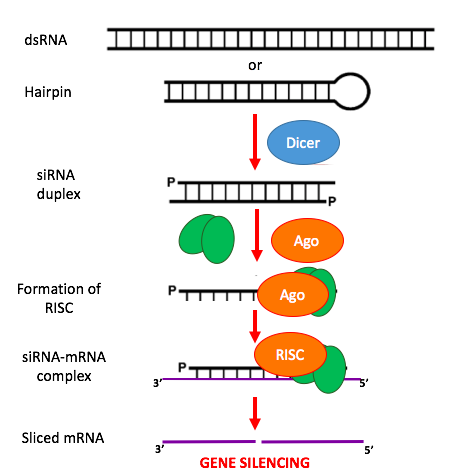We’re all familiar with DNA, but what about its lesser-known brother, RNA? Close in concept, but very different in purpose, these two types of nucleic acid areessential to our biology. So, what is RNA, or, Ribonucleic acid?

RNA’s Purpose
While DNA encodes your genes, RNA is important for how those genes get expressed. During the process of transcription, RNA is created by reading DNA with something called RNA polymerase.
The most important subtype of RNA is mRNA, which stands for messenger RNA. This type of mRNA carries the information from the DNA and goes over to ribosomes in order to create proteins. And proteins are the molecules that actually go forth and make changes in the body.

So, it’s sort of like DNA is a booklet containing all possible instructions for how to make things in the body, RNA are copies of only the relevant information for what the body needs right now, and proteins are the workers that go out and make it happen. This is known as the central dogma of molecular biology.
RNA vs DNA

RNA and DNA have a surprising number of similarities. And it makes sense: RNA is literally copying itself from that main template.
For example, RNA and DNA both are made up of four nucleotide building blocks. DNA is made up of G, T, A, and C. RNA is similar, but substitutes the T (thymine) for U (uracil). Uracil actually looks just like thymine but lacks one methyl (CH3) group that thymine has.
DNA is double-stranded, but RNA is just one strand (it can form double strands but this isn’t RNA’s normal state). It’s easier to stay this way because it’s a much shorter strand of molecules. Why? In its single-stranded form, it’s genetically cheaper to make (half the material) while still containing all of the information (after all, if one always pairs with the other then you know exactly what that other strand had to be). Also, it’s easier to read. We actually have to unzip the DNA helix in places in order to access the code within, while RNA already comes in a form that’s open and easy to read.
Finally, they have different backbones. DNA is held together by deoxyribose, the sugar-phosphate backbone holding all of those nucleotides in order. RNA’s backbone is made up of ribose. Ribose is a lot like deoxyribose but has an additional hydroxyl (OH) group. So, deoxyribose is just de-oxygenated ribose, because it doesn’t have that oxygen.
Special Types of RNA
When most people think of RNA, they think of mRNA. But there are several additional subtypes of RNA that each have special functions.
The process of creating mRNA wouldn’t be possible without other forms of RNA. Transfer RNA (tRNA) is required to bring amino acids to the ribosome. In the ribosome, ribosomal RNA (rRNA) links together amino acids so they can create proteins. Taken together, tRNA, rRNA, and mRNA are referred to as coding RNAs because they all work together to encode proteins.

Most noncoding RNA performs regulatory functions. The most popular of this category are microRNA (called miRNA or miR). These miRNAs can pair with single-stranded mRNA. When it does so, these mRNAs are tagged to be degraded. Therefore, miRNA can tag mRNA and shut down protein translation. So miRNA is usually used to control the amount of protein being produced from mRNA.
There’s also a very similar subtype called small interfering RNA (siRNA) which tags RNA for degradation right after transcription. It can be used to prevent any protein from being created. In addition, siRNA is often artificially used in labs to prevent certain proteins from being created and then see how this affects other biological processes.

Enhancer RNA (eRNA) was only first discovered in 2010. They are transcribed from “enhancer” regions of DNA – regulatory sites known to enhance gene expression. These eRNAs are also used to up-regulate the amount of mRNA produced from that DNA segment.
Small nucleolar RNA, called snoRNA, helps chemically modify other groups of RNA. They may help add either a methyl group (CH3), a process called methylation. Or they can turn one of the nucleotides into a uridine, a process called pseudouridylation.
Finally, there are long non-coding RNAs (lncRNAs). They are thought to silence long stretches of DNA. They also are thought to be involved in regulating stem cell division very early on in life.
What is RNA? Now You Know!
Now you’ve learned all about the mysteries of RNA. While not as widely known as DNA and not as flashy as protein function, it still remains one of the three cores of molecular biology. Life couldn’t exist without it. In fact, RNA is often thought to potentially be responsible for forming all life.






